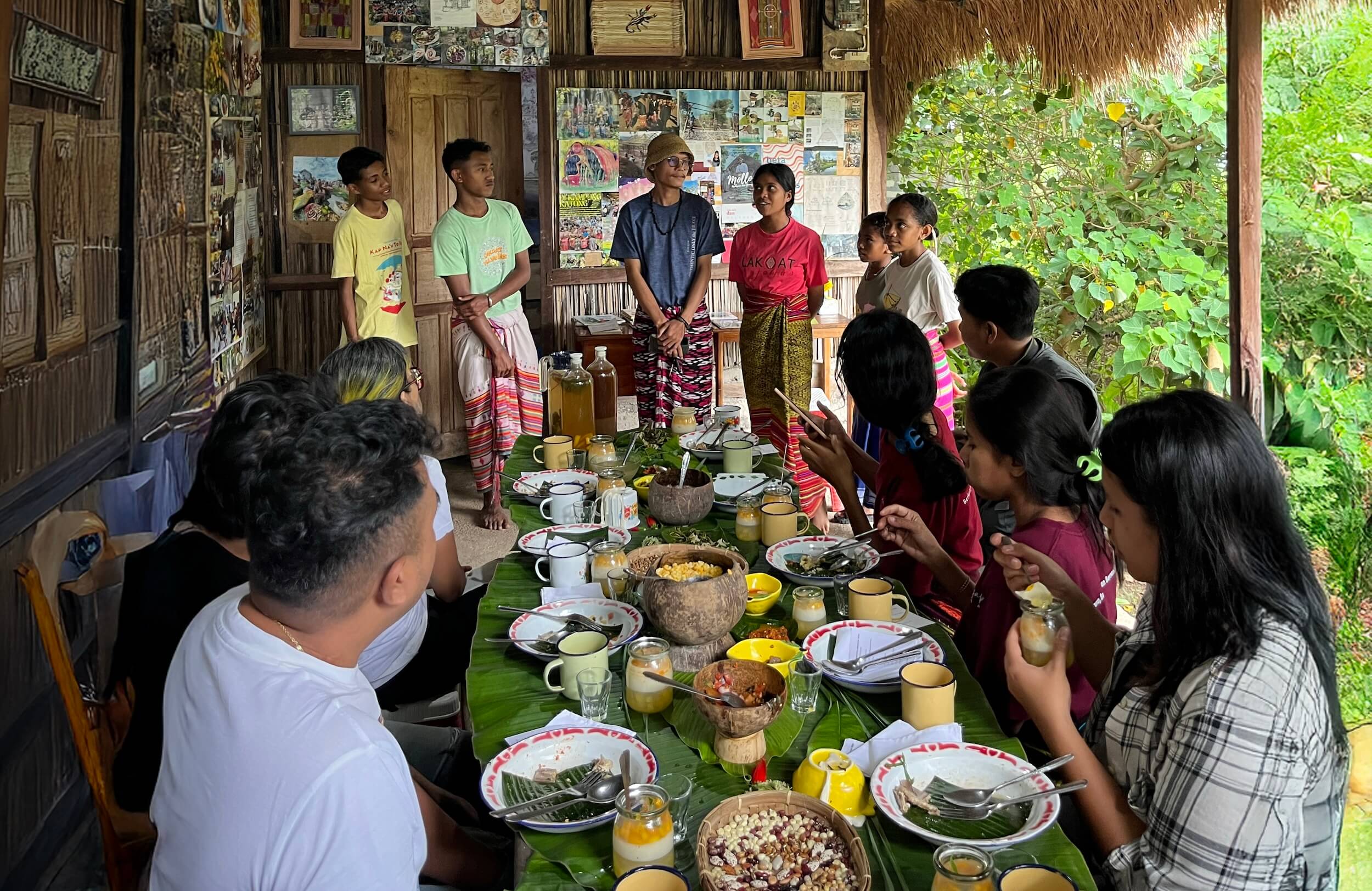




Chef Noi grew up around a kitchen, foraging and fishing with her father and learning to prepare food with her grandmother. These shaped her perspective on food and taught her responsibility, resilience, hard work, and frugality.
Chef Noi owns a restaurant, Doi Ka Noi, which specialises in traditional Lao cuisine. It has recently earned a spot among Asia’s 100 Best Restaurants, debuting at number 86, making it the first Lao restaurant to achieve this feat.
Chef Noi wants people to know and enjoy the dishes she grew up eating. Prepared traditionally with local ingredients, Lao food, she says, is authentic and healthy.
“A traditional Lao meal often includes ingredients that have been collected from the fields or forest, be it bamboo, fern tops, fungi or flowers,” she explains. “Foraged or cultivated, a Lao meal will always feature plenty of vegetables in main dishes. There is usually a side of lightly blanched vegetables.”
She adds, “Fish is present at almost every meal, and often it is simply stuffed with lemongrass and herbs, rubbed with salt and grilled over charcoal. Meat in dishes is used in small amounts, or, when it does dominate, it is shared. Nose-to-tail eating is embraced. There is little that goes to waste in the Lao kitchen.”
Grilling, steaming, or simmering are common cooking techniques. “An excellent way of cooking fish is mok which means to bury or cover with embers and ash,” she says. “Mok cooking creates and holds in the flavours and ensures succulence of the finished dish.”
Anyone exploring Lao food should not miss Aw, a thick and hearty dish from the mountainous north of Laos, says Chef Noi. She explains, “Traditionally, Aw dishes were cooked in Lam Mai Pai, a freshly cut piece of large-diameter bamboo. The bamboo tube is filled with the ingredients and loosely sealed with a rolled-up banana leaf. Then, you put the bamboo in front of an open fire to cook.”
“You won’t find this method used in any restaurants anymore,” says Chef Noi. In fact, she says many of Lao’s traditional food knowledge and cooking practices are disappearing.
“There are many pressing issues: youngsters are not learning to cook like I did, so knowledge is not being handed down. Convenience and processed food are everywhere, and there is very little awareness of the harm they cause. And, lifestyles are changing,” she says.

It has motivated her to self-publish a book, A Child of the Rice Fields: Recipes from Noi Lao Kitchen, documenting the traditional recipes she learned from her grandmother. She notes, “As in all traditional kitchens, nothing was measured or written down, but over the years I absorbed all her knowledge. It was a wonderful gift to inherit and has served me well throughout my life.”
Her restaurant’s menu, which changes weekly, offers around 12 carefully curated dishes inspired by regional seasonal flavours and prepared with the freshest market ingredients.
“Most of my ingredients are bought fresh daily from Talad Kua Din, the main market in Vientiane,” says Chef Noi. “The vegetables come from farms around the country, and fish usually comes from Pakse and the 4,000 islands in southern Laos. Over the last few months, I have been taking regular trips to the north of Laos as part of research for a second book. I often return with regional ingredients, such as Nor Kom (bitter bamboo), Wai (edible rattan), and many others.”
Recently, Chef Noi took on a project to create nutritious dishes for children in rural areas. “I teach the lovely ladies from the Lao Women’s Union how to make them, and they in turn teach parents in the villages. I am conscious of the need to ensure the recipes use healthy seasonal, regional ingredients and that the recipes remain appropriate to their culture and eating habits,” she says.
She hopes to establish a culinary school in the future to teach traditional cooking to Lao people, especially aspiring chefs, to safeguard Lao food culture. “People need to discover the joy of cooking and the importance of healthy, nutritious home-cooked food,” she says.
Chef Noi believes that the Lao PDR government and ASEAN can help raise awareness of Lao cuisine by facilitating the guesting of Lao chefs at restaurants and hotels in ASEAN Member States and hosting ASEAN-focused food events. “Fun and engaging cooking classes that end with participants eating together are also a good way to create lasting memories and provide cultural insight,” she says.
The views and opinions expressed in this conversation are solely of the interviewee and do not reflect the official policy or position of ASEAN.
Visit https://doikanoi.com/ and follow on IG <@ doikanoi> and FB <doikanoivientiane>








